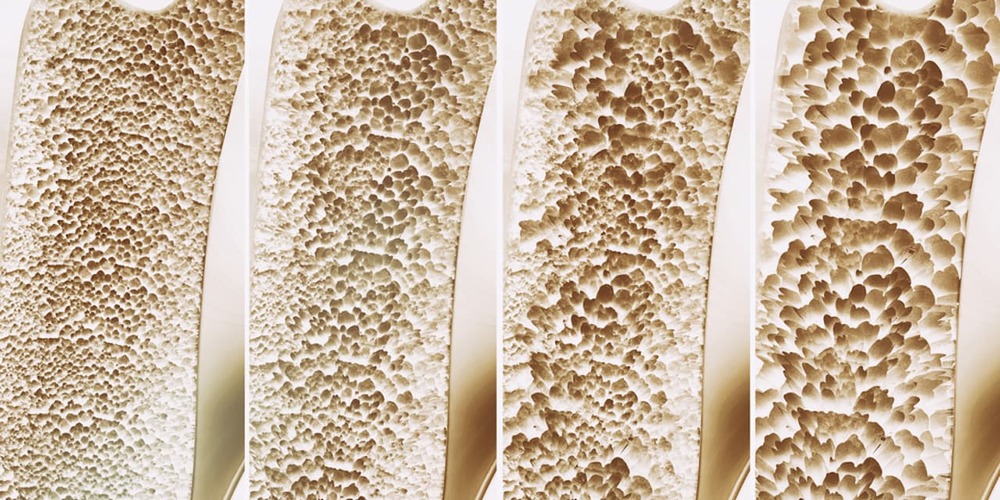

Dr. Mohamed Fawzy
15/06/2021
Osteoporosis is a condition that affects the bones making them fragile and more likely to break. Low bone mass and micro-architectural deterioration lead to bone fragility and a consequent increase in fracture risk. Osteoporosis is more common in older adults especially women, however it can also affect men, younger women, and children. Osteoporotic bone breaks are most likely to occur in the hip, spine, and wrist but other bones can break too.
Inside a healthy bone, there are small spaces, like a honeycomb. Osteoporosis increases the size of these spaces causing the bone to lose strength and density, the cortex becomes weaker and thinner.
Typically, there are no symptoms in early osteoporosis, but once your bones have been weakened, you might have signs and symptoms that include back pain caused by a fractured or collapsed vertebrae, loss of height over time, and stooped posture. The stage before osteoporosis is called osteopenia, this is when a bone density scan shows you have lower bone density than the average for your age, but not low enough to cause osteoporosis.
Many factors can also increase the risk of developing osteoporosis, including taking high doses of steroids for more than 3 months, other medical conditions such as inflammatory conditions, hormone-related conditions (e.g., hyperparathyroidism), low calcium intake, gastrointestinal surgery, family history of osteoporosis particularly a hip fracture in a parent, not practicing sports regularly, heavy drinking and smoking.
To check for osteoporosis, your doctor will review your medical history and do a physical exam. You may also need to test your blood and urine to check for conditions that may cause bone loss. If your doctor thinks you may have osteoporosis or that you are at risk of developing it, he will likely suggest a bone density test. This test is called bone densitometry or DEXA. It uses X-rays to measure the density of the bones in your wrists, hips, or spine. These are the three areas most at risk of osteoporosis. This painless test can take from 10 to 30 minutes.
If your test shows that you have osteoporosis, your doctor will work with you to create a treatment plan. Your doctor will likely prescribe medications as well as lifestyle changes. Medications can include Bisphosphonates which are used to prevent loss of bone mass, they may be taken orally or by injection. Other drugs can be used e.g., Denosumab, Teriparatide, Estrogen, and Calcitonin salmon. Lifestyle changes can include increasing your intake of calcium and vitamin D, as well as getting regular exercise.
Proper treatment can help protect and strengthen your bones. These treatments can help to slow the bone breakdown in your body, and some treatments can spur the growth of new bone.

